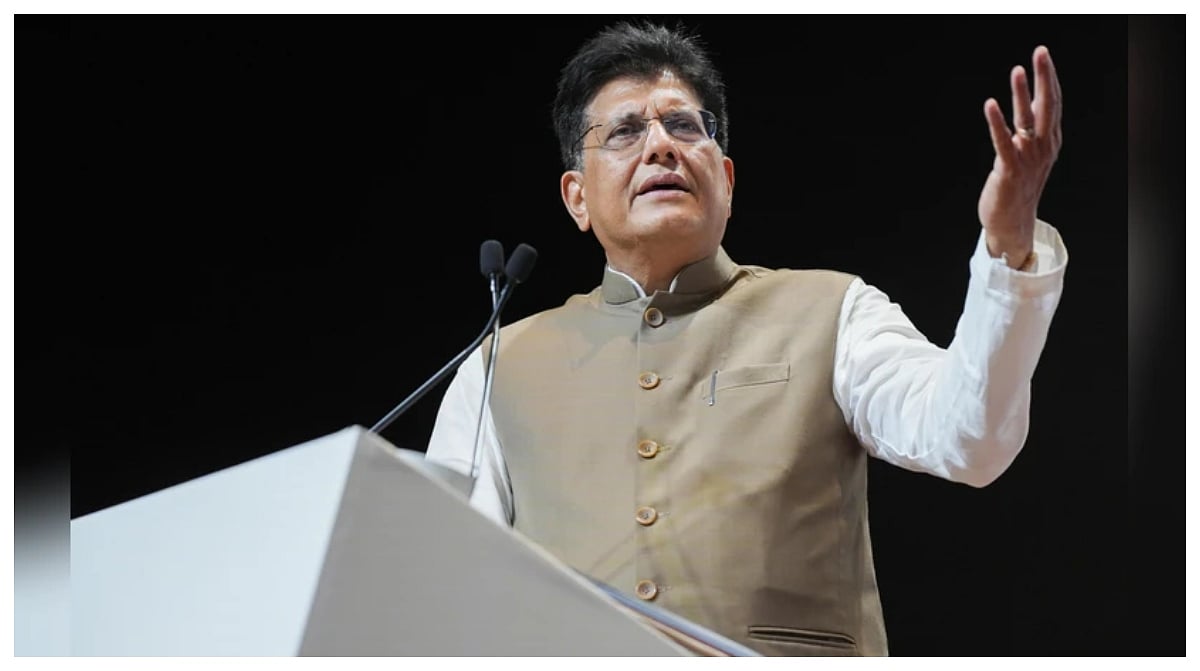The RBI kept its key policy rates unchanged (since May-20) through a unanimous vote of the Monetary Policy Committee (MPC). Thus Repo, Reverse Repo rate and MSF rate stands at 4.00 percent, 3.35 percent and 4.25 percent.
The MPC also decided (on a 5-1 majority) “to continue with the accommodative stance as long as necessary to revive and sustain growth on a durable basis and continue to mitigate the impact of COVID-19 on the economy, while ensuring that inflation remains within the target going forward” (ditto with the previous policy).
The first projection of real GDP growth and inflation for 2022-23 has been placed at 7.8 percent and 4.5 percent, respectively with quarterly estimates of inflation varying between 4 to 4.9 percent. The MPC noted that “inflation is likely to moderate in H1:2022-23 and move closer to the target rate thereafter, providing room to remain accommodative”. Other important measures are as follows.
According to a research report by ASK Wealth Advisors,
On-tap liquidity: The RBI has extended the on-tap liquidity facilities it offered to banks for lending to emergency health services and contact intensive services till June 30, 2022 from March 31, 2022. Under these facilities, banks can borrow at the repo rate up to Rs.500 billion to lend for ramping up Covid-19 related healthcare infrastructure and services and up to Rs.150 billion for lending to certain contact-intensive sectors.
FPIs' VRR investment limit: The RBI has decided to increase the limit under the voluntary retention route (VRR) for investment in government and corporate debt securities by foreign portfolio investors (FPIs) from Rs.1.5 trillion to Rs.2.5 trillion with effect from April 1, 2022. The decision was taken in view of the positive response by FPIs to VRR who have nearly exhausted their current limit..
Cap on e-RUPI voucher: The RBI has proposed to increase the cap on amount for per e-RUPI vouchers issued by governments from Rs.10,000 to Rs.100,000 and also allow use of the e-RUPI voucher multiple times until the amount of the voucher is completely redeemed.
NACH's limit for TReDS: The RBI proposed to increase the National Automated Clearing House (NACH) mandate for trade receivables discounting system (TReDS) related settlements from Rs.10 million to Rs.30 million. The decision was made keeping in view the growing liquidity requirements of the micro, small and medium enterprises (MSMEs) and the requests received from the TReDS platforms.
Crypto caution: The RBI Governor Shaktikanta Das has cautioned cryptocurrency investors. He stated that cryptocurrencies are a threat to macroeconomic and financial stability and undermine its ability to deal with challenges on the two fronts. Investors also need to keep in mind that the cryptocurrency has no underlying, not even a tulip, he added. Notably, the 'tulip mania' of 17th century is cited as an example of a financial bubble, where the price of something rises rapidly, outpacing its true value.
Capacity utilization at 68%: As per RBI OBICUS survey, capacity utilisation of manufacturing companies improved to 68.3 percent in the quarter ended September 2021 from 60 percent utilisation recorded in the June 2021 quarter. The survey reflected improved demand conditions and manufacturing companies recorded quarter-on-quarter (Q-o-Q) growth in new orders during the September 2021 quarter. The survey covered 761 manufacturing companies.
A few considerations of RBI
A few considerations seem to have guided RBI’s persistence on rates and stance that would now be unaltered for nearly two years. Following are highlighted.
i) Downside risk to growth: “The MPC flagged the potential downside risks to economic activity from the highly contagious Omicron variant. Reassuringly, the symptoms have remained relatively mild and the pace of infections is moderating as quickly as it surged. There is, however, some loss of momentum in economic activity as reflected in high frequency indicators such as purchasing managers’ indices for both manufacturing and services, finished steel consumption and sales of tractors, two wheelers and passenger vehicles. The demand for contact-intensive services is still muted.”
Implication: Despite the projected high growth of 7.8 percent during FY23 on top of 9.2 percent growth rate during FY22, RBI notes near term challenges and persisting weakness in certain sectors.
ii) Inflation expected lower: “The MPC also noted that consumer price inflation has edged higher since its last meeting, but largely along anticipated lines. The increase in inflation in December was entirely due to unfavourable base effects despite month-on-month decline in prices. Large buffer stocks of cereals and effective supply side measures augur well for food inflation. Core inflation remains elevated, but demand-pull pressures are still muted. The renewed surge in international crude oil prices, however, needs close monitoring”.
Implication: RBI seem to downplay the upside risks to inflation emanating from high commodity prices and seasonal variations.
iii) Future guidance: “On balance, headline inflation is expected to peak in Q4:2021-22 within the tolerance band and then moderate closer to target in H2:2022-23, providing room for monetary policy to remain accommodative. At the same time, output is just barely above its pre-pandemic level, while private consumption is still lagging. Global headwinds are accentuating. Overall, taking into consideration the outlook for inflation and growth, in particular the comfort provided by the improving inflation outlook, the uncertainties related to Omicron and global spillovers, the MPC was of the view that continued policy support is warranted for a durable and broad-based recovery.”
Implication: RBI indicates that as long as average CPI inflation would stay within the range of 4-6 percent, accommodate policy stance and rates may prevail.
iv) Financial stability: “The Reserve Bank has accorded the highest priority to preserving financial stability by taking quick and decisive steps to ease liquidity constraints, restore market confidence and prevent contagion to other segments of the financial market. Ask Wealth Advisors said, "We have been also strengthening the regulatory and supervisory framework for both banking and non-bank financial sectors to proactively identify, assess and deal with vulnerabilities. … We have to be, however, watchful of the impact of the pandemic on the banking and NBFC sectors when the effects of regulatory reliefs and resolutions fully work their way through.”
Implication: Clearly RBI has concern regarding the strength of the financial sector and would prefer to let it consolidate its gain from a nascent recovery.
v) Open Mouth Operations: “Thus, policymakers face daunting challenges even as recovery from the pandemic remains incomplete. On its part, the Reserve Bank has been and will continue to insulate the domestic economy and financial markets from these spillovers. Further, while the RBI will continue to focus on smooth completion of the government borrowing programme, market participants also have a stake in the orderly evolution of financial conditions and the yield curve. It is expected that market participants will engage responsibly and contribute to cooperative outcomes that benefit all.”
Implication: RBI is clearly displeased with the spike in bond yields beyond 100 bps from its low even though RBI kept its policy and rates unchanged during this period. We can expect a more active RBI in the bond market going forward, said Ask Wealth Advisors.
Implication and outlook: Ensuring Financial stability with an Open Mouth
The RBI kept its policy rates unchanged despite evidence of inflationary pressures mounting and persisting beyond the period which can reasonably be looked through. Clearly RBI has enhanced its tolerance limit and no longer targeting the previous anchor of 4 percent, the mid-range of its 4-6% band.
The RBI has also decided to overlook the burgeoning gap between CPI and WPI and somewhat underplayed the possibility of corporate margin pressures adding to inflationary outcome. It has also restricted its global commodity inflation pass through effect primarily to oil and not raised an alarm over the possibility of generalized price pressures on account of prolonged supply chain disruptions. RBI also seem to draw comfort from the deflationary fiscal policy that aims to switch expenditure away from revenue to capex and the tight leash that it is having on food prices. Thus, in effect fiscal policy is doing the job of monetary policy of inflation control while monetary policy seem more concerned with nurturing growth, a task that is usually accorded to fiscal policy.
The RBI’s stance contrasts with that of FED that has materially altered its language and reversed its liquidity accommodation at a pre-specified pace. RBI on the other hand not only continue to assure on continuation of the easy stance but yet to set its course firmly on bringing down the excess liquidity in the system. We hold that RBI would find it difficult to reduce the excess liquidity unless the bank credit grows faster or excess capital flow dwindles, said Ask Wealth Advisors.
In its approach to financial stability, it has given priority to consolidate the balance sheet of banks and NBFCs and haven’t rung the bell on asset price inflation. This is in consonance with its findings that delinquencies on account of retail credit are likely to rise and overall NPAs may inch up in the current fiscal. Equity market clearly have a lot to gain not only from the continued easy policy and stance, but the assurance RBI has indicated for its continuation and for its concern over reviving weaker segments of the economy and the need for financial sector to consolidate its gains.
That despite prevalence of such high liquidity, LAF rates itself have hardened by 50 bps and effective policy rate has shifted its anchor closer to the Repo rate, is a definitive cue for the market although RBI has chosen to ignore its implication on the development of the yield curve. RBI is clearly displeased with the sharp increase in the Gsec yields. However, it draws heavily on what can be described as Open Mouth Policy, OMO but in contrast to open market operations that refers to durable alteration of liquidity, the former seeks to chide the market players to be guided more by RBI’s policy stance in their own actions.
Ask Wealth Advisors said, "We, however, would hold that RBI would find it difficult to contain the continued rise of market rates this way as the borrowing programme remain high and any real recovery would continue to exert upward pressure to the whole yield curve and across market segments. As said earlier, RBI may fall behind the curve".
Market and portfolio implications
Ask Wealth Advisors said:
1. As we had held that some level of curve flattening is likely – this is already happening and RBI just provided a fillip to this process.
2. Heightened volatility, especially in the shorter tenors, because rate signals are contrasting at both ends.
3. Our fixed income strategy remains unaltered. The 4-6 year segment represent the best bet on considerations of risk-reward equation as it provides the best carry with least volatility.
4. Time to start looking at interval funds – there are a few in the market, and there are likely to be a few more.







